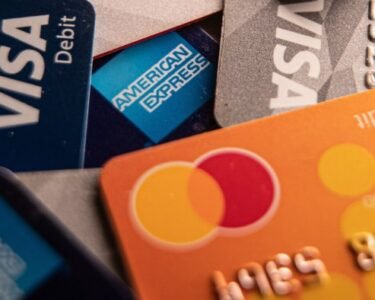Reaching fair credit on your credit-building journey can feel like a milestone that opens up a lot of doors.
While you may not yet qualify for the best cash-back or travel cards, you’ll likely have more options than the bare-basics secured cards or starter cards geared toward those with poor or no credit. At this stage, you may be able to find cards with lower fees, better rewards or other card perks. Just remember to do your research and choose cards with transparent terms so you won’t be faced with any unwelcome surprises down the line.
And remember, your main priority should still be improving your credit by using your credit card responsibly. If you continue to pay your bills on time and in full while also keeping your credit utilization ratio low, you’ll be able to raise your credit score to “good” or “excellent” levels over time.
How do you know if you have fair or average credit?
The easiest way to know if you have fair or average credit is to check your credit score. You can access your credit score through a free credit monitoring service. Or, if you already have a credit card, your issuer may offer the ability to monitor your credit score.
Depending on the service you use to check your credit score and the credit bureau you pull your report from, it might use either the FICO scoring model or the VantageScore model. Here’s how to tell where your score falls:
Credit Scores
| FICO | VantageScore |
|---|---|
| Poor: 300 to 579 | Subprime: 300 to 600 |
| Fair: 580 to 669 | Near prime: 601 to 660 |
| Good: 670 to 739 | Prime: 661 to 780 |
| Very good: 740 to 799 | Superprime: 781 to 850 |
| Exceptional: 800 to 850 | – |
In addition to checking your credit score, you should also review your credit report in detail. You can get a free copy of your credit profile from each of the three major credit bureaus — Equifax, TransUnion and Experian — through AnnualCreditReport.com.
Once you have your credit report, check it for discrepancies. If you find incorrect information on your report, you can dispute it with the credit agencies to have it removed. If your report looks correct, you can begin working to build your credit.
What is a credit card for fair and average credit?
Certain credit cards require varying levels of credit to reach. Credit cards with a recommended credit score of 580 for FICO and 601 for VantageScore are credit cards for fair and average credit. They won’t offer as impressive perks as a credit card for good or excellent credit, but they can help improve your credit score so you can get approved for better cards.
How to find the best credit card for fair and average credit
Though you can find credit cards with competitive rewards and welcome bonuses for fair or average credit, if your credit falls in this spectrum, it’s more important to find a credit card that will help you build responsible credit habits. But if you’re interested in earning rewards, look for a credit card that will work well with your regular spending — and avoid cards that might encourage you to overspend.
To increase your credit score and gain access to some of the best credit cards, focus on making regular, on-time payments and avoid charging up to your credit limit to keep your credit utilization low.
How to improve your credit score
There are a number of ways to increase your credit score. The simplest and easiest is to pay your credit card bill — and any other loan you may have — on time each month. However, you could also improve your score by working to pay off your credit card debt. Reducing the amount of debt you have can help improve your score by reducing your credit utilization.
If you have high credit card debt, consider applying for a balance transfer credit card to help you pay it off faster. Adding another credit card can also increase your overall available credit, lowering your utilization. Before you apply, figure out how much you’ll need to pay each month to pay off the balance before interest starts accruing again. Keep in mind you’ll likely have to pay a balance transfer fee of 3% to 5%, so factor that into your budget when calculating your payments.
Another option if you’re just starting out is a secured credit card, which is designed to help improve your credit by building a positive payment history. A secured credit card requires a one-time security deposit upon approval, but it’s refundable following responsible use.
The security deposit will typically form your initial credit limit, so if you can, deposit as much as possible to give yourself a solid credit limit — so long as it won’t entice you into spending money you can’t immediately pay back. Use the card responsibly and your credit should start to improve.
How to maximize your credit card benefits and build credit
Use the card responsibly to avoid expensive pitfalls and properly take advantage of the benefits. Don’t spend above your means and pay off the card on time and in full to avoid a revolving balance. If you carry a balance, you’ll start to accrue interest charges, which can quickly put you in debt and wipe out the value of any rewards you may earn. Your credit should begin to improve once you have a solid credit history of on-time payments.
Alternatives to credit cards for fair and average credit
Using a credit card responsibly is the easiest way to improve your credit score. If you’re stuck at the fair or average level, building a history of on-time payments is your best bet. However, if you’d rather build credit another way, you can do so by paying other loans on time. Any credit product — including personal loans, mortgages and auto loans — will help build your credit by paying online.
You can also try a credit-building loan. It works like a reverse personal loan. Rather than receiving the money you borrowed up front, you pay the loan down and get the cash at the end. The primary function is to help improve your credit.
How to apply for a credit card for fair and average credit
To apply for a credit card, follow these steps:
- Choose a credit card that matches your needs.
- Apply securely on the credit card issuer’s website, providing the necessary personal and financial information. This will include your name, address, date of birth, Social Security number, income, and monthly rent or mortgage payment.
- You should hear back instantly with the credit card company’s decision. If not, it may reach out for clarification or more information.
FAQs
What is the average credit score in the US?
The average credit score in the US was 715 in 2024, according to Experian.
Can you get a travel card with fair credit?
Travel credit cards typically require good to excellent credit. However, some general credit cards may offer minor travel protections and not charge foreign transaction fees, which you could use while working to improve your credit.
What are the benefits of a high credit score?
Having strong credit that falls in the good-to-exceptional range (670 to 850 FICO) comes with a number of advantages: more favorable rates and terms, better and more lucrative rewards, higher credit limits, more perks and more options. You’ll also have an easier time finding a credit card that’s best suited to your needs and preferences.
What kind of credit card can you get with a fair credit score?
You can get the most of the same types of cards that people with good or excellent credit can get: cash-back rewards cards, secured credit cards, student cards and simple ones with no annual fees, to name a few. However, the APRs might be higher if you have fair or average credit, or the credit limits may be modest.
What’s the minimum score needed to get approved for a credit card?
Typically, the minimum credit score needed to get approved for a credit card depends on the particular credit card and the type of card. Each card has different lending criteria. However, if you have a credit score below 600, you might have a tough time getting approved for a credit card. In this case, you’ll want to search for credit cards that either don’t require a FICO score or look at other factors to determine creditworthiness or secured cards.
What are the easiest cards to get approved for?
Retail store cards and subprime cards are the easiest to get because they’re structured for people who are considered a higher risk for lenders.
A secured credit card might also be easier to get and is designed for people who are rebuilding their credit. With a secured credit card, you need to offer an initial security deposit that usually gets refunded. Credit limits tend to be low and usually match the amount of your security deposit.
The editorial content on this page is based solely on objective, independent assessments by our writers and is not influenced by advertising or partnerships. It has not been provided or commissioned by any third party. However, we may receive compensation when you click on links to products or services offered by our partners.




